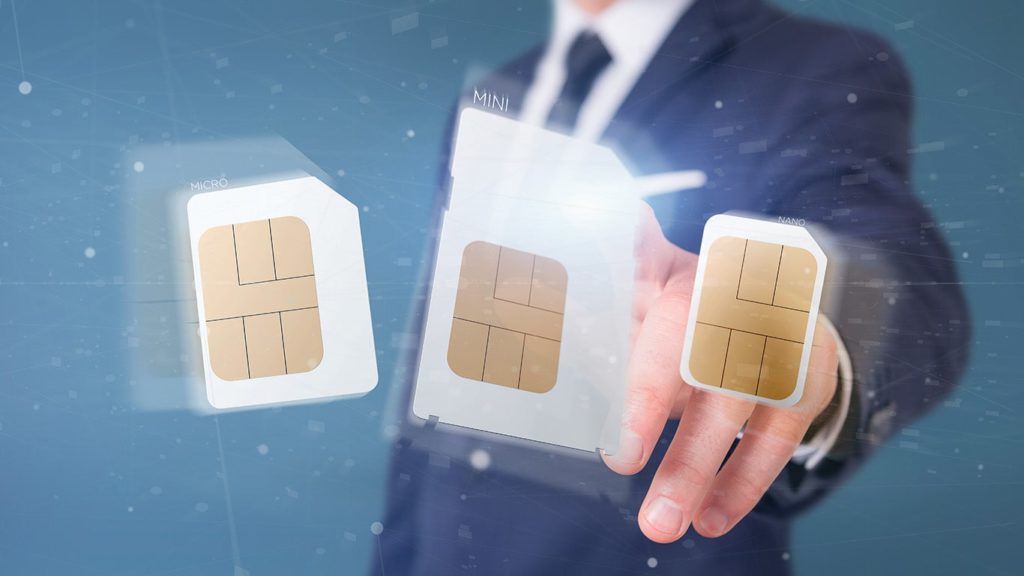
Looking for a definition of triple SIM? The term can refer to multiple things, and we’ll give you a concise but detailed explanation of each of them. In essence, it’s what you’d expect – triple-SIM allows you to insert 3 SIM cards at once. Most smartphone models only have one network antenna that all 3 SIM cards have to share. You can still receive texts and calls on all 3 at once, you just can’t answer them at the same time. This is very similar to the hybrid technology called DSDS (Dual SIM Dual Standby), only with 1 additional phone number. With that said, let’s delve into what is triple SIM.
1. Triple-SIM card
This is the first out of 3 things triple SIM can refer to, although not what most people first think of. The term is used by mobile service providers to signify a full-size SIM card or a mini-SIM card that they provide to their users. The name stems from the fact there’s a cutout you can punch out a smaller SIM card size out of. That way, you get a micro-SIM card and a nano-SIM card on top of the two larger sizes above, all in one. This capability also doesn’t depend on the type of SIM, since prepaid SIM, postpaid SIM, and pay as you go SIM all come in form of a triple-SIM card.
2. Native triple SIM support
This is what most people think of when triple-SIM is mentioned to them. The smart devices of this type have a built-in technology that allows you to insert 3 SIM cards so you don’t need to swap them. In almost all cases, they support the TSTS (Triple SIM Triple Standby) technology. This is due to manufacturing costs, since putting more than one network transmitter can be expensive.
Plus, since you have 3 receivers but only 1 transmitter, you’re not draining the battery unnecessarily. That way, all 3 SIM cards can receive texts and calls at the same time, and you can choose which one to use for Internet data. However, when you, for example, accept a call on one SIM card, the other two are temporarily disabled until you end it.
The downside of such phones is that they’re not likely to look, feel, or function as modern smartphones. Also, they’re rarely manufactured by mainstream smartphone companies. They’ll be bulky, have small screens, and a weak CPU and GPU. In most cases, you can find such phones in foreign markets only, such as China, Nigeria, India, etc.
3. Artificial triple-SIM support
This is a solution to the problem above. By buying a third-party adapter from a reputable company, (for example, SIMORE) you can artificially expand a slot that’s intended for 2 SIM cards into accepting a third. The adapter looks like a thin plastic strip with golden contact and an additional SIM card slot. It’s relatively cheap and very easy to install, but not always pretty. However, the third SIM is recognized as if you had triple SIM support from the get-go.
Another benefit is that you don’t have to buy a new phone, nor do you have to settle for an outdated, off-brand phone manufacturer. Triple-SIM adapters support all newest flagship smartphone models, such as Apple iPhone 12, Samsung Galaxy S20+, Huawei P40, as well as the flagships of older generations.
4. Is Dual SIM plus eSIM a triple-SIM?
Short answer – technically, yes, officially, no. You might’ve seen a special version of the Apple iPhone 11 and 12, manufactured exclusively for markets such as China. They use a hybrid SIM slot that allows you to insert two nano-SIM cards, plus a soldered e.g. embedded SIM card that can’t be physically removed, but adds a possibility of a third phone number. In the official specs, this is still called dual SIM dual standby mode. You might be able to use a triple-SIM adapter to expand the total number to 4! Such technology already exists and is called QSQS (Quad SIM, Quad Standby).